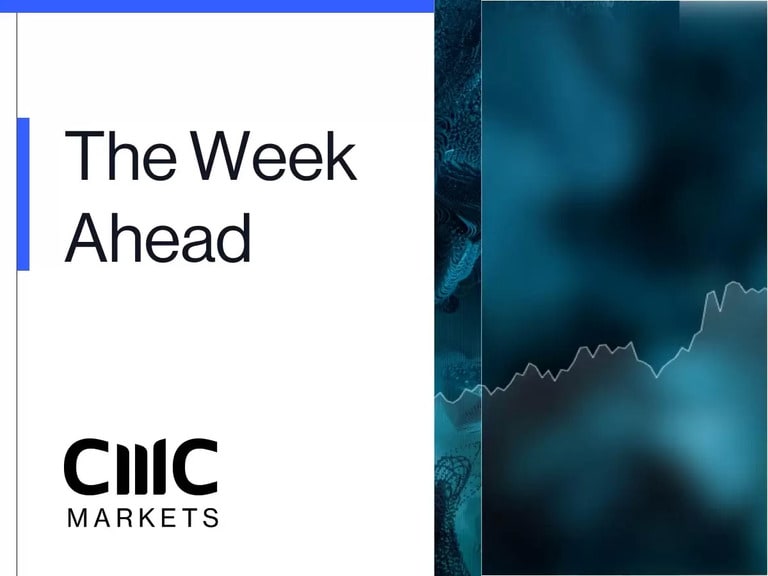It was another poor day for European markets yesterday with the FTSE100 getting hit the hardest, while the DAX also slipped back before finding an element of support at the 15,000 area just above its October lows. The FTSE250 also had a poor day closing at a one year low
Sentiment continues to remain fragile and while the geopolitical noise from the Middle East wasn’t as apparent yesterday, it’s still very much there and remains a clear and present danger for nervous investors, as concerns rise over third party involvement.
US markets at one point looked as if they might finish the day higher, however that wasn’t too last, as stocks retreated from the highs of the day and finished the session lower in the aftermath of yesterdays comments from Fed chair Jay Powell, which served to drive US bond yields even higher.
These factors have continued to weigh on markets overnight, with Asia markets falling sharply and as such we can expect to see another weaker European open.
Anyone expecting to hear Fed chairman Jay Powell adopt a less hawkish tone given the recent rise in yields was in for a disappointment, when he indicated that despite recent moves in rates financial conditions probably still weren’t tight enough given the continued strength of the US economy.
While Powell was able to make his comments, the subsequent Q&A was interrupted by climate protestors who interrupted the event and had to be removed. Once the Q&A began Powell said that rates probably hadn’t been high for long enough, and that the neutral rate was probably higher than previously thought.
This had the effect of pushing yields higher across the board, with the US 10-year coming within touching distance of 5%. He also said that the Fed was prepared to allow yields to settle where they may, and that allowing them to rise should mean that the Fed may not have to hike as much.
Oil prices, which had been in negative territory for a lot of the session reversed course and finished the day higher on reports of drone strikes on US forces in Iraq, as well as a US warship intercepting rockets fired from Yemen by Iranian Houthi rebels aimed at Southern Israel.
On the data front, the confidence and the health of the UK consumer is one again in focus with retail sales numbers for September, after October Gfk consumer confidence deteriorated sharply this month sliding to -30, from -21, as the lagging effect of higher mortgage rates, along with rising prices at the pump as well as the horrific events in the Middle East hammered sentiment.
It’s been a difficult Q3 for consumer spending in the UK with July seeing a huge slump in retail sales of -1.1%, having finished June fairly strongly. There was a hope that any wet weather slump in July might have been mitigated by a Barbie/Oppenheimer/Taylor Swift bounce. That hope proved to be in vain with clothing and food store sales especially weak given the change in the weather from the June heatwave. What was particularly notable was that while the value of sales rose, volumes fell back furthering the divergence of previous months, as consumers spent more to get less. Online sales, on the other hand saw an increase to 27.4% up from 26% in June, with non-store retailing not even close to offsetting the declines in food and non-food stores.
In August the picture was slightly improved, but not overly so, with a rebound of 0.4%, as clothing stores experienced a recovery. Fuel sales acted as a drag however due to the sharp increase in petrol prices from the lows in June.
As we look at today's September retail sales, we could see another tepid number although we might see a lift from some back-to-school spending, however the unseasonal warm weather could have prompted some autumn clothing spend to be deferred, while boosting food and drink sales. Altogether expectations are for another negative number of around -0.4%, with consumers continuing to get squeezed by higher prices.
Public sector borrowing is expected to rise sharply to £17.5bn, with higher interest payments once again expected to boost the numbers.
EUR/USD – pushed above the 1.0600 area yesterday but needs to break above the 1.0620 area to unlock a possible move to 1.0740. The main support remains at the October lows at 1.0450, as well as the 1.0400 area which is 50% retracement of the 0.9535/1.1275 up move.
GBP/USD – the pound continues to struggle to rally through the 1.2200 area, while finding bids just above 1.2100. We need to see a move through the 1.2340 area to unlock a move to the 1.2430 area and 200-day SMA. A move below 1.2000 targets the 1.1835 area, 50% retracement of the move from the record lows at 1.0330 to the recent peaks at 1.3145.
EUR/GBP – appears to have broken to the topside through the September highs and the 200-day SMA at the 0.8700 area, and could extend to the 0.8760 area. We still have trend line support from the August lows, now at 0.8645.
USD/JPY – continues to struggle anywhere near the 150.00 area, with resistance also at the previous highs at 150.16. A break of 150.30 targeting a move towards 152.20. Support at the lows this week at 148.75.
Disclaimer: CMC Markets is an order execution-only service. The material (whether or not it states any opinions) is for general information purposes only, and does not take into account your personal circumstances or objectives. Nothing in this material is (or should be considered to be) financial, investment or other advice on which reliance should be placed. No opinion given in the material constitutes a recommendation by CMC Markets or the author that any particular investment, security, transaction or investment strategy is suitable for any specific person. The material has not been prepared in accordance with legal requirements designed to promote the independence of investment research. Although we are not specifically prevented from dealing before providing this material, we do not seek to take advantage of the material prior to its dissemination.








